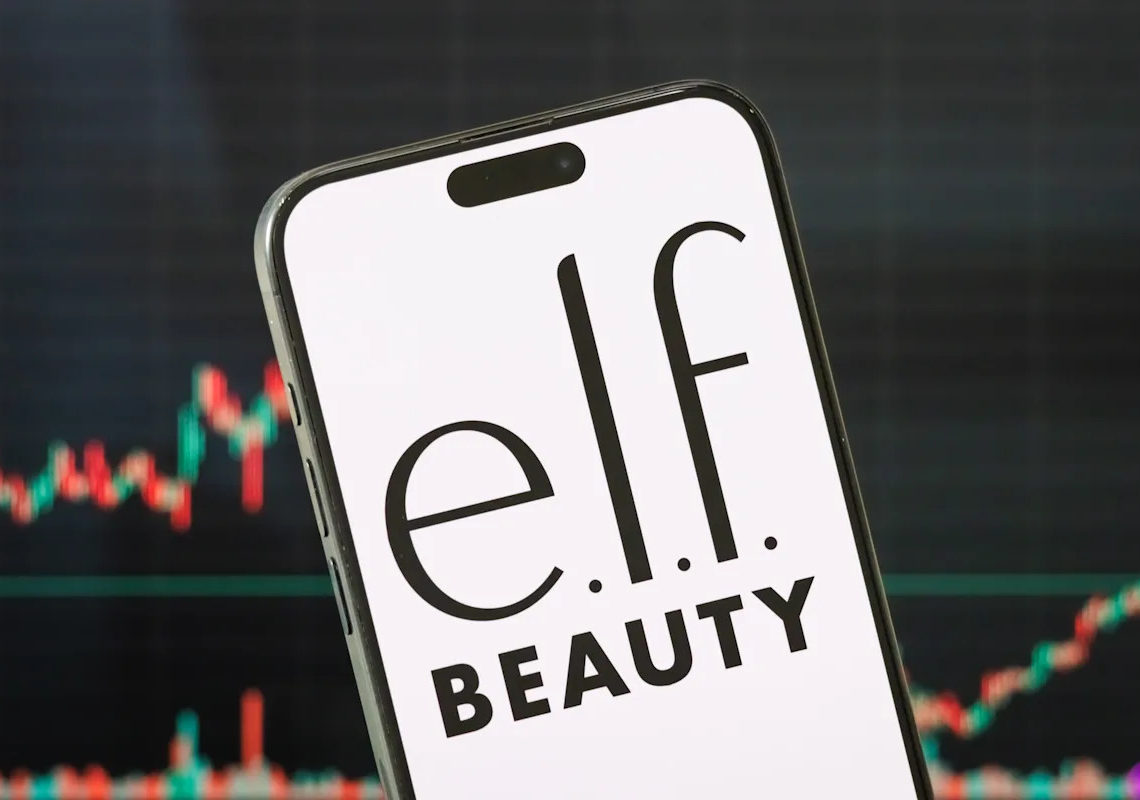Adrianna Rinaldi has enough high-quality leggings to last a week of remote work in New York without having to do laundry – and it didn’t cost her a small fortune.
Instead of continuing to spend up to $118 for one pair from Lululemon, she now buys a version that is a third of the price. CRZ Yoga has built a cult following for its near-perfect dupe – short for duplicate – of Lululemon leggings. “The quality is just the same,” said Rinaldi, 34. “There’s more acceptance around not going for the brand name.”
From copycat brands to store-label groceries, budget alternatives to everyday essentials and indulgences are having a moment. Rather than the cheap knockoffs of old, they often come close to their brand equivalent in quality. More Americans are prioritizing price and value in lieu of national brand loyalty, according to spending data and company earnings calls – while influencers are also embracing the change.
“The dupe feels like you’ve cheated or one-upped the system … especially in a time of economic uncertainty,” said Lauren Beitelspacher, a professor of marketing at Babson College in Wellesley, Massachusetts.
Brands and retailers are hustling to meet the moment as persistently high grocery prices, increasing personal debt levels and tariff uncertainty weigh heavily on consumers, creating a sense of urgency to save. Albertsons CEO Susan Morris told investors last week in its first quarter earnings call that the grocery retailer is “leaning heavily into own brands,” looking to meet customer demand for more options at lower prices. This expansion could also be a “great solution for our customer” when tariffs push up grocery prices, she said.
Even mid- to high-income consumers are changing how they spend, despite “still doing pretty well” on paper, said Chedly Louis, a retail analyst and vice president at Moody’s. They are trading down to retailers such as Walmart, Dollar General and Dollar Tree, which historically serve low- to mid-income consumers. And the increasing popularity of store brands signals “higher caution from the consumer,” she said.
The same is true in some discretionary categories, where there are more options for quality products at attainable prices.
“People may not feel so beholden to a single brand – rather it’s more about an overall aesthetic or niche that they want to express,” Jenna Drenten, a marketing professor specializing in digital consumer culture at Loyola University Chicago, wrote in an email. “For every single one of the brand name ‘must-haves’, there are suggestions for the cheaper (but still good) version to buy instead.”
– – –
The private-label boom
The trend is most evident in the grocery aisles, said Sally Lyons Wyatt, of the market research firm Circana. Large supermarket chains, big-box stores and value retailers have been leaning into private labels, which have higher margins than name brands, for decades. But they doubled down in 2022 as prices surged, noted Lyon Wyatt, the company’s senior adviser on global packaged goods and the food service industry.
By 2024, sales on private-label food and nonfood grocery products hit an all-time high of $270.6 billion, a 4 percent increase over 2023, according to a report from Circana and the Private Label Manufacturers Association. That is about a fifth of total sales last year. National brands climbed 1 percent.
“The investments have certainly been worth it for grocers,” said Neil Saunders, a managing director at retail analytics firm GlobalData. “They’ll probably push on it even harder.”
Canned food company Del Monte, which filed for Chapter 11 bankruptcy earlier this month, and General Mills, the maker of Cheerios and Cinnamon Toast Crunch, have pointed to private labels as being increasingly tough competition. In a 2024 Ipsos poll, a third of respondents said most or all of their groceries within the previous week were store brands, while only 24 percent said the same of national brands. (Forty-one percent responded that the share was half and half.)
These products often look strikingly similar to their national-brand equivalent, Beitelspacher said, “to signal to the customer that they’re the same quality.”
Customers are also more clued in, with a better understanding that store brand products are sometimes manufactured in the same facility as the national brand, according to Saunders.
Stephanie Olson, 31, said it wasn’t until she lost her job during the coronavirus pandemic that she started planning her grocery lists around sales and coupons. Olson said she shops at Kroger in part because she lives in its hometown of Cincinnati, and because the store brands often have the best discounts and coupons, making the price gap against national brands even wider.
“They definitely make it enticing to buy their brand,” said Olson, who works in talent acquisition.
In the past few years, retailers not only announced new private-label lines, but also improved branding, quality and selection, Saunders said. Target invested in its organic line Good and Gather and its indulgent offerings from Favorite Day. Albertsons’ line of sweets – Overjoyed – is reminiscent of Target’s, using brightly colored packaging and whimsical font.
Meanwhile, Walmart has seen success with Bettergoods, which features organic and “healthier” products that have been a draw for higher-income customers. Amazon turned to the other end of the spectrum, announcing Amazon Saver, a no-frills line of grocery staples. (Amazon founder Jeff Bezos owns The Washington Post.)
Then there are the wholesale chains, most notably Costco and its Kirkland Signature brand, which have long dominated in the space, Lyons Wyatt said. The brand, which includes apparel, alcohol and groceries, accounted for 23 percent of Costco’s revenue last year, generating $56 billion, according to the PLMA report. Those sales alone exceed those of Best Buy, Coca-Cola and Dollar General.
Newer competitors are the Germany-based value retailers Aldi and Lidl, which have been rapidly expanding in the U.S. Aldi opened 120 new U.S. stores last year and its U.S. sales grew 14 percent over 2023, reaching $54 billion, according to the National Retail Federation. One quarter of U.S. households now shop at Aldi, Dave Rinaldo, then the president of Aldi USA, said at a PLMA conference.
Jack Salzman, 29, doesn’t mind walking a bit farther outside his neighborhood in Chicago to go to Aldi because his money “goes a lot further,” the freelance TV and film production assistant said. “I can spend under $100 and have enough stuff for a full week, and then some, at Aldi.” Plus, he often can’t taste the difference between the store brand versus the national brand.
Sydney Patterson, 30, feels similarly about over-the-counter medication. Growing up, she was used to seeing Tylenol, Advil and Aleve in her medicine cabinet. Now she thinks twice before reaching for those familiar brands, looking instead to the “Target version that’s $5 cheaper,” the fundraising consultant in Dallas said.
– – –
Discretionary dupes
While it’s true that aspirational brands still hold weight in the fashion and beauty space, consumers are more open minded about trying cheaper alternatives, said Drenten, of Loyola University Chicago.
Influencers were the catalyst, she added, because by speaking openly and enthusiastically about a dupe, it gives permission to followers to do the same – and even brag about it.
Brands like Quince, E.L.F. Beauty, Few Moda and Dossier have built their customer base by explicitly duping expensive, popular products. Dossier, which went viral on TikTok for its “impression perfumes” of designer brands, recently opened its first store in New York City. Instead of spending $335 on Maison Francis Kurkdjian’s Baccarat Rouge 540, Dossier has its own version called Amber Saffron for $49.
Sales of fragrance dupe brands surged 103 percent in mid-June compared to the same period last year, according to NielsenIQ. Cosmetic dupe sales increased almost 10 percent and facial skin dupe brands were up about 27 percent.
Consumers are also allocating more of their spending to cheaper goods over expensive ones, according to Adobe Analytics, which tracked sales from June 2024 to June 2025. In apparel, the share of the cheapest goods increased about 9 percent, while the share of most expensive goods decreased by 5.7 percent.
Quince, which sells apparel, accessories, suitcases, homeware and kitchenware, is more reminiscent of a private label model, in which its products are made and sold by the factories making them. While its website doesn’t advertise the brand it’s copying, Quince has made the comparison in marketing texts: “Our answer to the $5K Bottega bag is here,” one text read. “Same luxe craftsmanship. Same premium handwoven Italian leather.” Quince’s version costs $130.
Few Moda, a membership-model fashion website, asserts that its products are “made by the same manufacturers as the leading brands you know and love, at cost” and that it bypasses “the middlemen and the markups.” Most items on the website note which pricey brand’s manufacturer it shares, such as that of Staud, Theory and Ted Baker.
Then there is Amazon, where many fashion and accessory sellers dupe trends – as CRZ Yoga does. Rinaldi, who works in ad tech in New York, said she and her friends are often sharing and showing off their finds.
“I just complimented my friend’s outfit and … 50 percent of what she was wearing was from Amazon,” she said. “Now, it’s socially acceptable.”
Related Content
‘Buckingham Nicks,’ the missing link of the Fleetwood Mac saga, is back
Family adopts a shelter dog — then learns he’s the father of their late dog
Can the Fed stay independent? Trump-era adviser may put it to the test.
The post How the rise of dupes and store brands could change the way you shop appeared first on Washington Post.




